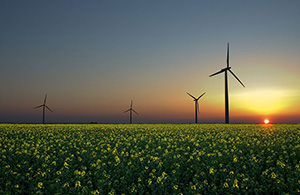Money Morning Article of the Week
by Kent Moor, Money Morning
Whenever oil prices drop, everyone always wonders how it will affect wind and solar power.
It follows from the traditional assumption that renewables like these are only competitive when oil and natural gas prices are high.
After all, the early stages of wind and solar power came with a hefty front-loaded price tag, requiring massive government subsidies to both producers and end users to get off the ground.

Some states even introduced legal measures that required that utilities buy a certain percentage of their energy needs only from renewables.
All of this only added to the wider perception that renewables couldn’t truly contend, especially if oil and natural gas prices fell.
But those days are now rapidly coming to an end…
The Key to All the Controversy Is Grid Parity

The larger truth is that the wind and solar landscape has changed significantly. Most of the subsidies have been phased out, and mandatory renewable energy purchases are now facing significant political opposition.
As utilities have argued for years, both the subsidies and the obligated energy buys have translated into higher costs to the consumer.
There is also the common problem built into renewable electricity production: Since the power cannot be stored, it’s not always available when needed.
After all, the sun doesn’t always shine and the wind can suddenly go calm. That has required energy producers to duplicate sourcing in a legal no man’s land, adding to the effective expense.
Of course, environmentalists have long maintained that even some additional cost is worth the major advantage gained on the pollution side. Needless to say, solar and wind remain far less damaging to the environment, even though wind towers create dangerous impediments for birds, especially migrating fowl.
Yet it is ultimately price that will put an end to all of these controversies.











Leave A Comment